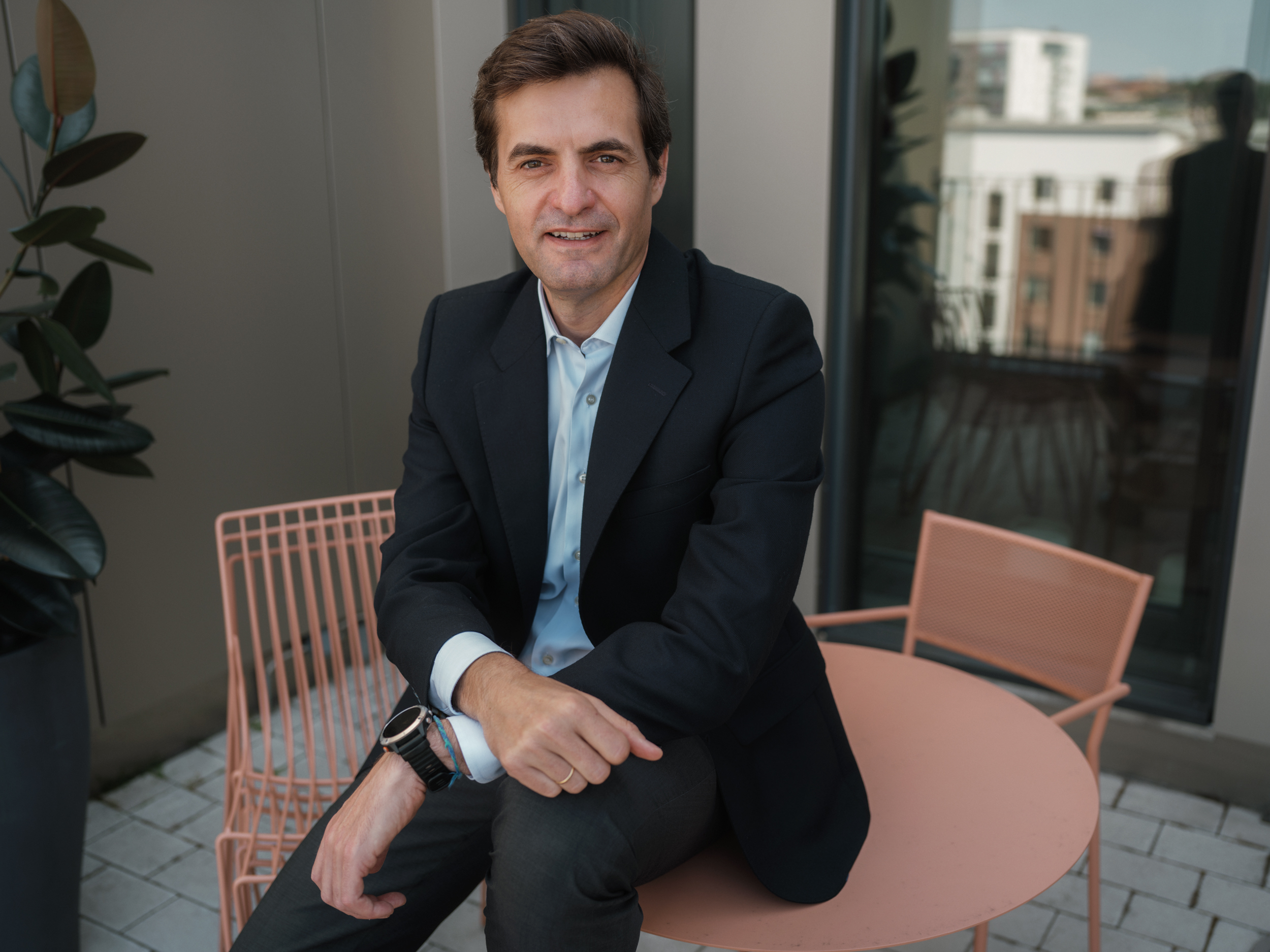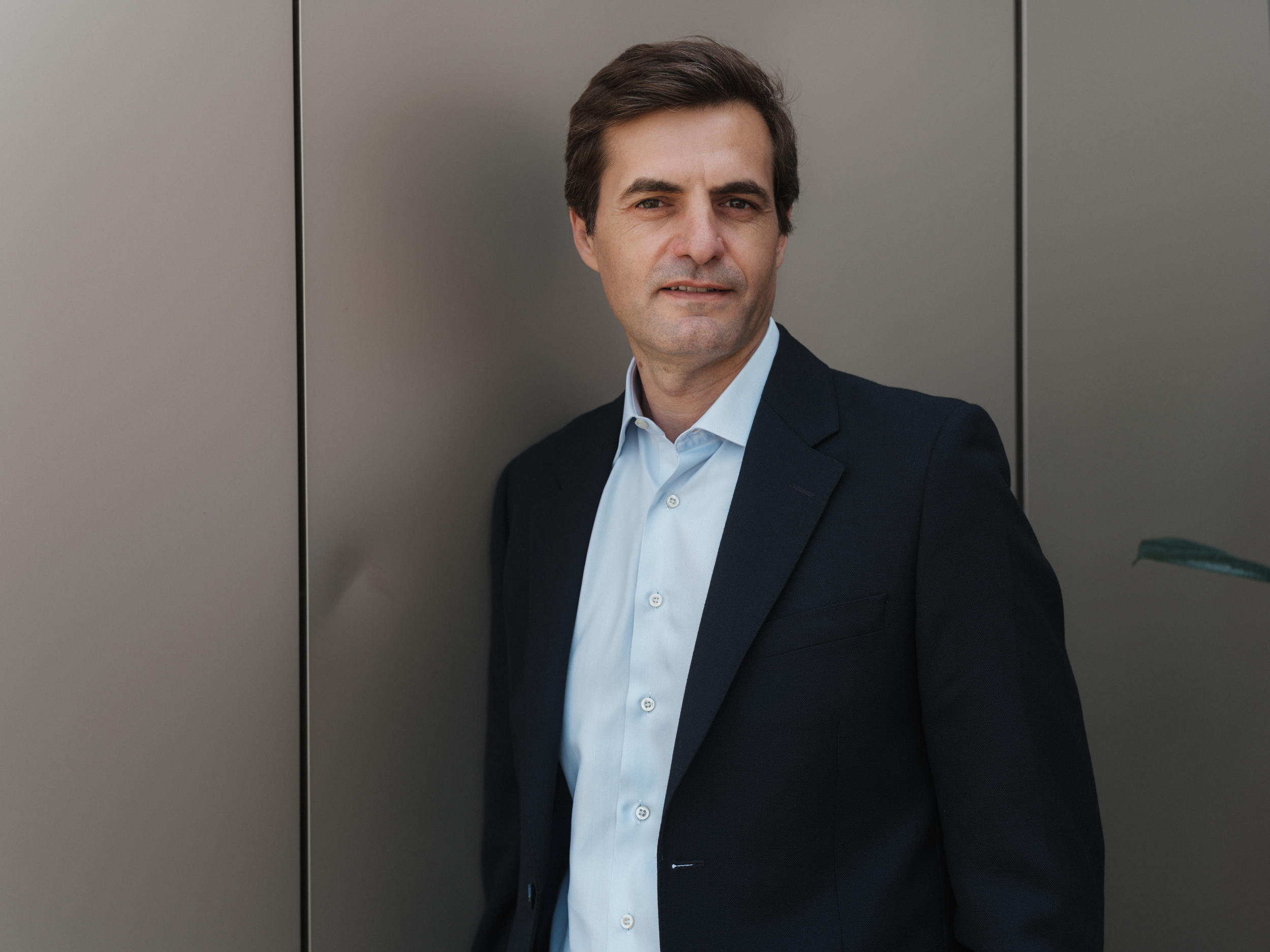Investments: behind the scenes
As Intrum’s Chief Investment Officer, Javier Aranguren oversees Intrum’s Investment business and is responsible for around 300 investments every year – with a total SEK 38bn book value. As Intrum moves to a capital lighter business model, he explains how he sees the future developing.
Intrum helps its clients get paid by offering two types of business: collection services on a third-party basis, and investments, where Intrum acquires portfolios of overdue receivables and collects the balances on those claims. The latter removes those claims from the client’s balance sheet, and thereby freeing capital. On average, this model generates around 45% of the group’s total revenue.

Javier Aranguren has led the Investment organisation since 2020, having joined Intrum in 2011. In the past decade there have been significant changes in the sector, he says.
The market for Investments is much more mature. The processes for selling portfolios and the buyers themselves have become more sophisticated.Javier Aranguren, Intrum’s Chief Investment Officer
In the past banks and financial institutions used to see their sales as a once in a while event, now they are integrated into their strategies for managing non-performing loans (NPLs) and it is normal to have recurring sales every year.
Most sellers have disposed of vintage portfolios for which they had exhausted their collections efforts. Now, the books of debt on the market are fresher and the pricing higher than it was in the past.
With recurring sales, the portfolios are fresher with more capacity to recover, which has increased pricing as a percentage of the original claim.
He believes the trend towards debt sale as an embedded strategy is here to stay, encouraged both by the sophistication of the market and regulation that encourages banks to remove NPLs from their balance sheets.
“I expect this business to continue to grow – selling portfolios is now a part of banks strategy to optimise the collection process and manage their books. Regulation in Europe is also driving banks to dispose of non-performing assets from their balance sheet.”
Economic impact on non-performing loan supply
Today’s economic environment, in which customers are struggling to pay bills because of inflation and rising interest rates will only encourage the flow of NPLs to increase further.
“An NPL tsunami was expected after Covid but we haven’t seen anything like that – volumes have been quite stable,” says Aranguren. “During Covid, people had money to repay as well as government support – which pushed the problem into the future. But there has been a significant increase in stage 2 loans across Europe – the stage before NPLs – so I do expect volumes to increase in the near future.”
With the increased maturity of the market, the role Intrum plays in the customer journey and the individual experience is more important than ever.

Sellers know we will treat their customers properly and find solutions with them so they can regain financial control and reintegrate into the financial system.
Assets under investment
Intrum invests mainly in NPLs across Europe where the business has operations – covering circa 98% of the European NPL stock.
“Our core assets are consumer unsecured loans but we have expanded in recent years and buy SME and large company loans as well as secured loans,” says Aranguren. “We also invest in some performing loans and some ‘Unlikely to Pay’ (UTP) portfolios – those at a prior stage to non-performing.”
Investment is led by the expertise of the servicing side of the business, he says, with purchases made in asset classes where the business has established a presence. “As servicing units across Europe have expanded their capabilities, we have expanded investment into secured debts, company loans and UTP. That’s the cycle: service, develop knowledge and then understand how to price.”
Certain asset classes are more predominant in some markets – most secured debt is purchased in Southern Europe: Spain, Italy, Greece, Portugal and France – with some in Poland and Hungary. “We tend to buy those portfolios where we see them,” Aranguren explains. “In the Nordics, the majority of portfolios available are unsecured.”
In future, he expects to acquire more UTP portfolios, also known as early arrears and pre-default, as lenders look to bring collections expertise in at an earlier stage and reduce the stock on their balance sheets. In addition, there is an increasing ecommerce trend. However, he says some ‘Buy Now, Pay Later’ with high interest rate portfolios may not match Intrum's investment criteria.
“There are certain asset classes we won’t invest in. We do careful due diligence on the seller and portfolio, for example checking the interest rate on the original lending as we have internal rules that prevent us from buying portfolios with a significantly high interest rate. We can’t afford a bad reputation, and a central part of preventing that is to invest in assets associated with proportionate interest rates and adequate consumer protection.”
Granular investment opportunity
Intrum buys a large number of portfolios each year – usually around 300 unique deals are done and the total purchase value of the book is around SEK 38bn over more than 20,000 portfolios.
“We have a very granular pool of portfolios. The amount we invest varies from year to year but last year we invested SEK 7.5bn ,” says Aranguren. “We collect SEK 13bn a year across hundreds of thousands of payments.”
He says this makes the business an ideal investment.
It’s very attractive from a risk perspective. We have a huge footprint across Europe and 80,000 clients. We support smaller and larger sellers – banks but also smaller entities – and the outcome is a granular, stable book.
Within the book, the core assets are consumer unsecured loans, which make up 85%-90% of investments. The balance of 10%-15% is made up of secured claims. The majority of investments are in bank and FI portfolios, with 10%-15% from other sellers, mainly Utilities and Telecoms.
Rate of return and pricing expertise
The returns average for portfolio investments Intrum currently owns is 14%-15%. However, in the last couple of years, rising interest rates have increased our return expectation on new portfolio investments.
“Funding costs have increased so we’re also increasing the returns required. says Aranguren. “In the last couple of quarters, it’s been more in the 16% area. We try to maintain the gap between the cost of funding and the cost of new portfolios – our competitors are doing the same.”
He adds: “In the short term we don’t expect this to change but that will depend on the evolution of interest rates.”
The business relies on its history and extensive data to price portfolios. “We have sophisticated models but the difference is our data,” says Aranguren. “We have been investing across Europe for decades and have a long history of data that we can use in our models. We are Europe’s leading collections provider – so are already servicing many of the portfolios we buy, but if there is a different servicer, we can easily find a similar portfolio to ensure accurate pricing.”
Capital partnership strategy planned
To date, Intrum has funded the majority of investments itself, through credit facilities and by issuing bonds. It has worked with partners and continues to do so on an ad hoc, deal by deal, basis but that is now changing.

One of our key priorities is to pursue a capital partnership strategy – creating an investment platform funded by third party capital. We will co-invest, which means we can invest higher volumes without increasing Intrum’s balance sheet exposure.
As part of this capital lighter strategy, Intrum will become the asset manager for its investment partners, thereby increasing its income streams and volumes for servicing. It hopes to have this platform in place by the end of the year.
Aranguren believes this is a strong value proposition for prospective partners, given Intrum’s unique and proprietary sourcing of portfolios and a strong record of attractive returns.
“The granularity of investments, coupled with the fact that we have been doing this for many years and have the results and a strong track record make this an attractive investment opportunity,” he says. “Existing and future expected regulations is expected to further increase sellers’ incentives to divest portfolios, making this market bigger in the future.”
Negative adjustment ‘one-off occurrence’
The economic environment and its impact on portfolio investments, funding and collections is something Aranguren is watching closely. In 2022, the business undertook a one-off negative adjustment in its Italian SPV as part of its standard quarterly revaluation process on its portfolios.
“It was painful but a one-off and not a reflection of the rest of the book’s value,” explains Aranguren. “We normally perform at par or overperform and that is why our quarterly revaluations in our book are neutral to positive however in this case as part of the revaluation we identified the need to reduce the ERC on this particular portfolio that was of significant size. Two or three quarters have passed since then and we haven’t adjusted again.”
As part of that exercise, Intrum reviewed its other joint ventures and concluded that no other reductions were required. It now holds only SEK 1bn in JVs compared to SEK 38bn total investments.
“The other impact the macroeconomic environment is having, as well as the cost of funding, is on our customers,” he adds. “They have less disposable income to pay their debts but our servicing units are experienced and prepared to support customers through this crisis. We have been through worse crises in 2008 and Covid, and have seen that the portfolio is very resilient.”
The business has not seen any major difference in its estimated remaining collections (ERC) figure.
We are seeing a reduction in settlements and a need to transfer these to more sustainable payment plans but we are still collecting what we expect to collect, as our Q1 performance demonstrates.


